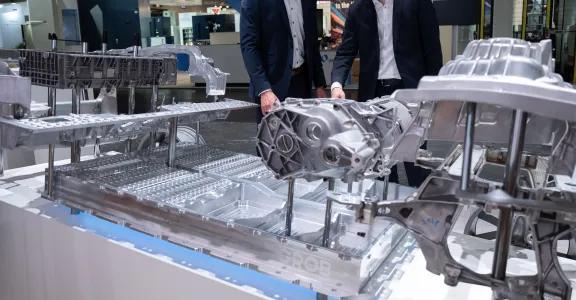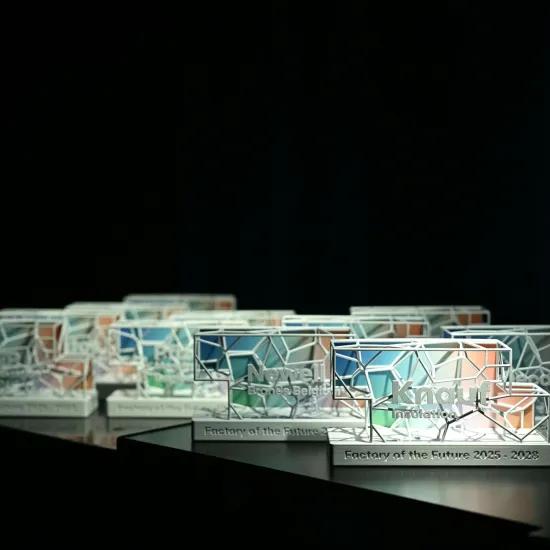Putting the focus on faster, better and higher quality machines
In the third week of September it was that time again: time for the 2023 EMO trade fair, the biennial high mass for the machining industry, to open in Hanover. What follows is a short report of what we could spot for you.
The fair was structured around three core themes: the future of business, the future of connectivity and the future of sustainability. Between the commercial stands, visitors could listen to lectures on these topics and visit research stands relating to them.
With four large halls fewer this time, the 2023 fair was slightly smaller than before the COVID-19 pandemic, but that seemed to be mainly reflected in the presence of smaller, better-targeted stands. The top brands were, in any case, all present. The presence of many Asian manufacturers and distributors was also very noticeable.
Trends
Whereas in previous years manufacturers still paid a lot of attention to the themes of sustainability and Industry 4.0, it was noticeable that these terms were now much less prominent on the stands. Instead, the main emphasis was on the quality and fundamentals of the products: machines are becoming faster, better and of higher quality. The trend towards hybrid solutions was also slightly less conspicuous than in previous editions. It was clear that a role was being reserved for cobots and automation. Almost every manufacturer showed some application in which a role was given to a cobot.
Eye-catchers in innovation
There were some notable innovations:
Renishaw showed how a cobot can also perform accurate measurements via a measuring probe and a calibration concept.
The Belgian RoboJob delegation stole the show with the Tower, with its new servo gripper system. The Tower, occupying just a few square meters, can supply enough components to a milling machine or lathe for up to 72 hours of unmanned operation.
New service models could also be seen here and there. For example, on the stand it shared with DMG-Mori, Siemens revealed its Digital Twin-concept, a type of app store that allows post-processers of other machine builders to be bought or loaded. These can then lead directly to simulations with the CNC programming.
https://robojob.eu/nl/producten/series/tower Spanflug Makeis an online platform on which an automatic quotation can be made and presented to more than 100 possible (German) suppliers based on 3D models and a 2D PDF drawing with information such as materials and quantities. This allows a buyer and supplier to be brought together at a competitive price.
Although the marketing term ‘Industry 4.0’ was less conspicuous, it was still there in the background. Visualising what happens during a process has become standard practice for machines. Everywhere you looked, dashboards and apps were showing whether spindles were turning, which product was being processed and how much power was being used. But major breakthroughs involving the use of AI algorithms remained somewhat under the radar. We look forward to seeing whether steps will also be taken in production systems in the coming years.





